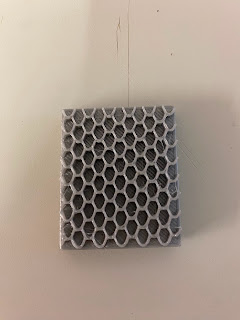The Landscape
The Landscape
Landscape paintings refers to an artwork with a primary focus on natural scenery, such as mountains, forests, cliffs, etc. Although the 'objects' are natural, the scene itself can be imagined, with the artist composing their own landscape.
Caspar David Friedrich: Wanderer above the Sea of Fog
In this painting, Friedrich uses a vertical orientation, instead of the usual horizontal which is most commonly used as it allows the painter to show a much larger area. In my opinion this works well with the man standing in the foreground, as it focuses your eye into the centre much better than a horizontal orientation would.Including people into landscapes is not so common, and if they are present, they are usually not so detailed. I would still count this as a landscape however, because Friedrich is manipulating and focusing the mountains towards the centre. Combined with the fact that the man is facing out and not towards the viewer, makes him part of the landscape and not so much a separate being.
His use of colours and light is also interesting, his focus is on the background, as shown by how this is where the brightest and most colourful parts are. The man is almost standing in the shadows. Most people with figures in the foreground focus on including lots of details and highlights, whereas the man here is merely an addition to the landscape, adding to the overall effect, rather than standing out on its own.
Maya Lin: Wave Field
The Wave Field is an example of land art. This is art that is made directly in the landscape, sculpting or manipulating the land itself to create something new. Land art can be permanent, such as the Wave Field, or it can be temporary, such as sand sculpting. Most of the time, it is photographed, and that is what ends up in galleries or museums, instead of the art itself.Lin makes the wave fields by interpreting the movement of water, and translating it onto the ground. It consists of 13 foot high mounds of dirt covered with grass, with the sun shining down, it creates dark valleys and bright hills. This particular Wave Field is situated in upstate New York, on a former gravel pit. She chose the site as an environment reclamation project, using sustainable practices to rework the desolate area into a useable and interesting area. She made this by moving around the existing gravel, adding topsoil and introducing a natural drainage system along with low-impact grasses.
I like this piece as not only has she reworked existing landscape she has transformed a once rundown area (it was untouched since the Storm King's founding in 1960) into a useable and inviting place, but she recognises that it will be ever-changing. This evolution directly emulates the nature of her inspiration; waves. Waves are always evolving, getting bigger, crashing and never re-appearing the same as before, just like this land art. Wave Fields will shift, break-down, and get holes from burrowing animals, and that's what I like most about it.





Comments
Post a Comment